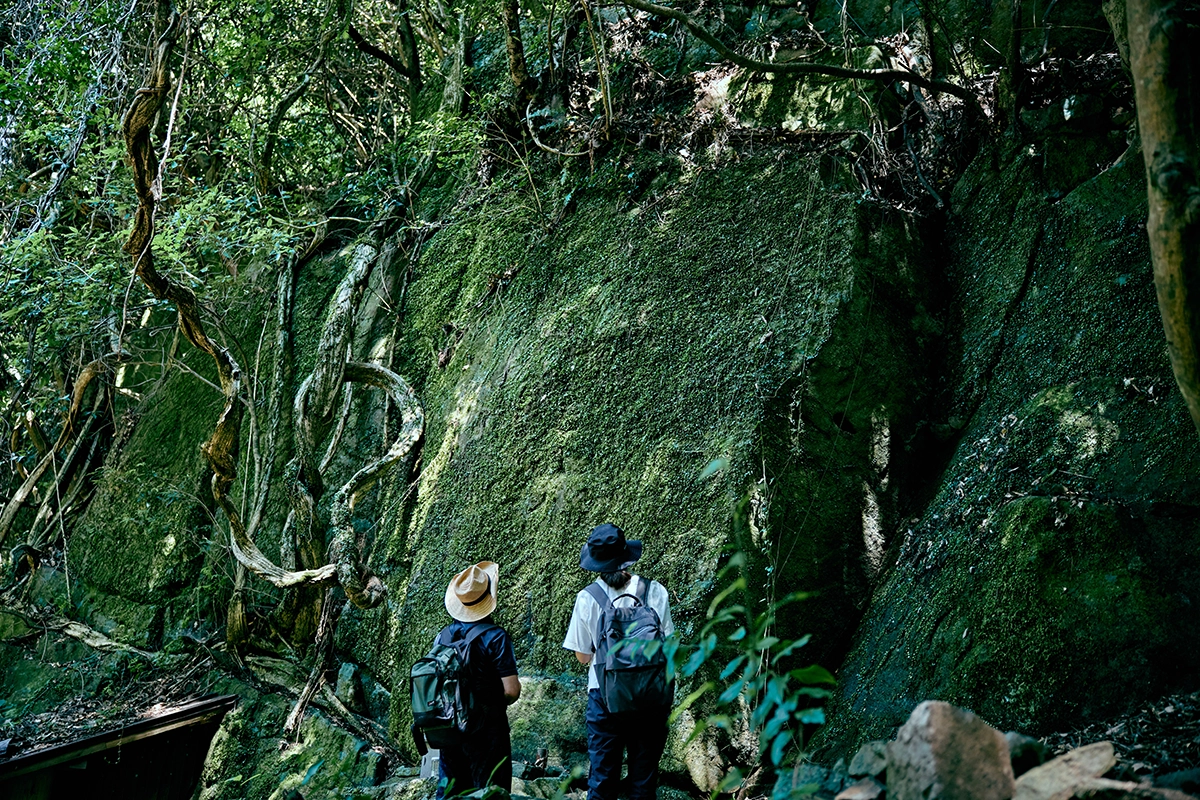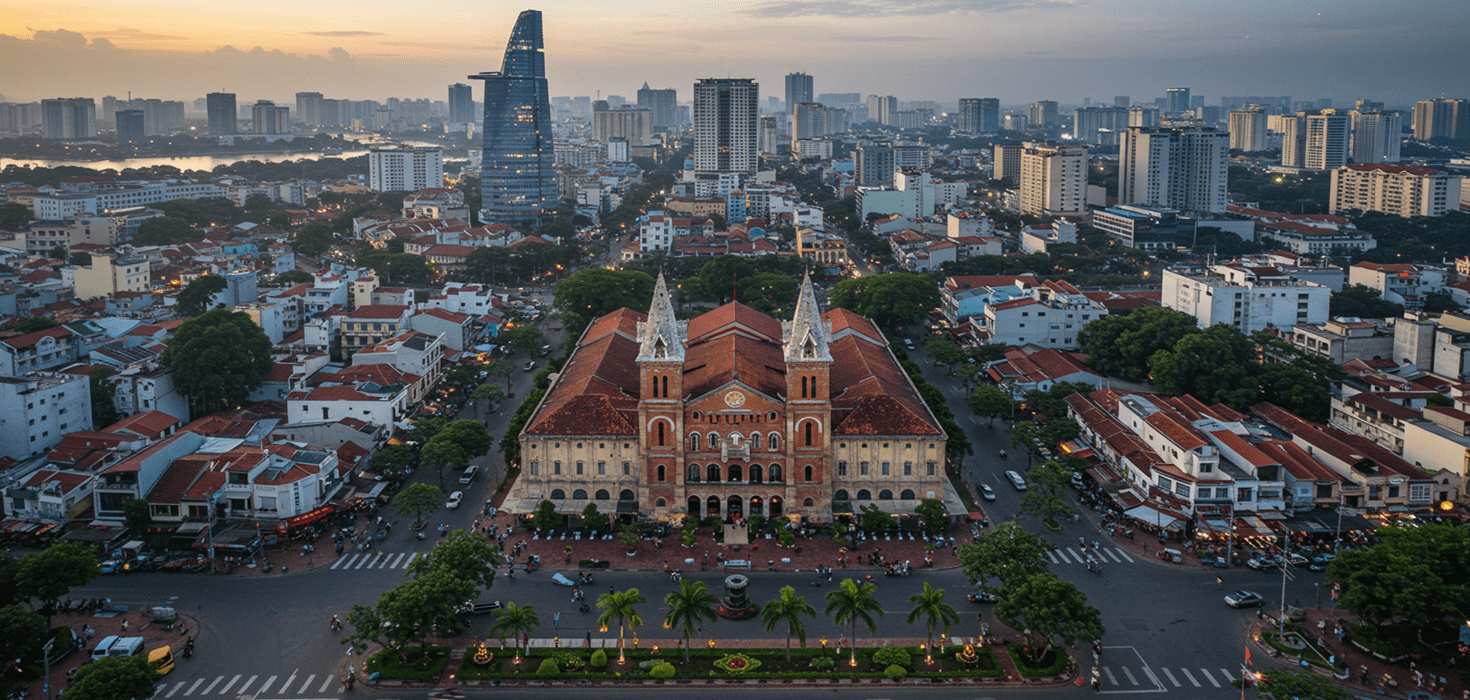Overview of Bali’s Tropical Climate: What to Expect Year-Round
Welcome to Bali, the Island of the Gods, where the sun shines brightly, the lush greenery flourishes, and the warm ocean breezes beckon travelers from all corners of the globe! With its tropical climate, Bali offers a delightful escape, but what exactly can you expect from the weather year-round? Let’s break it down!
Bali is situated just south of the equator, and its climate is characterized by two distinct seasons: the dry season and the rainy season. Temperatures typically hover between 24°C to 32°C (75°F to 90°F) throughout the year, making it a perfect destination for sun-seekers. However, humidity levels can be quite high, especially during the rainy season, so be prepared to feel a little sticky!
During the dry season, which stretches from April to September, you can expect plenty of sunshine and blue skies. This is the ideal time for beach lounging, surfing, and outdoor adventures. The humidity tends to be lower, making it more comfortable for exploring Bali’s stunning landscapes and vibrant culture.
On the flip side, the rainy season runs from October to March, bringing with it lush greenery and a refreshing atmosphere. While you might encounter some downpours, these typically occur in short bursts, leaving plenty of opportunities to enjoy the island. Plus, this season is less crowded, allowing for a more intimate experience with Bali’s natural beauty and rich traditions.
One fascinating aspect of Bali’s climate is its influence on local agriculture. The island’s farmers rely heavily on the rainy season to cultivate rice and other crops, which thrive in the wet conditions. So, when you’re enjoying a delicious plate of Nasi Goreng, you can appreciate the hard work of the farmers who bring these flavors to your table!
For more insights into the best times to visit Bali based on its weather patterns, check out Bali’s Weather Unveiled: The Best Time to Visit.
Decoding Bali’s Seasons: Dry vs. Rainy Season
Now that we’ve set the stage with an overview of Bali’s tropical climate, let’s delve deeper into the specifics of its seasons. Bali’s dry season, from April to September, is a sun lover’s paradise. Expect bright days filled with sunshine, perfect for beach outings, surfing, and exploring the island’s breathtaking temples and rice terraces.
During this time, temperatures are consistently warm, and the humidity is relatively lower, making it comfortable for outdoor activities. Some of the best things to do during the dry season include:
- Surfing: Head to Kuta Beach or Uluwatu for some of the best waves in the world.
- Hiking: Challenge yourself with a sunrise trek up Mount Batur for stunning views.
- Cultural Experiences: Visit local markets and temples, where you can witness traditional ceremonies.
On the other hand, the rainy season, from October to March, brings a different charm to Bali. While you may experience more rain, this season is perfect for enjoying Bali’s lush landscapes and vibrant culture. Here are some activities you can enjoy during the rainy season:
- Cultural Visits: Explore museums and art galleries, where you can learn about Balinese culture and history.
- Wellness Retreats: Indulge in spa treatments and yoga sessions, perfect for relaxing during the occasional rain shower.
- Cooking Classes: Learn to whip up traditional Balinese dishes, a fun way to spend a rainy afternoon!
Despite the rain, Bali’s beauty shines through, and you might find the island even more enchanting with fewer tourists around. For more tips on the best times to visit Bali and activities suited for each season, check out The Ultimate Guide to the Best Time to Visit Bali.
Bali’s Weather by Month: What to Expect
Ready to plan your Bali adventure? Let’s break down the weather month by month! Knowing what to expect will help you pack appropriately and choose the best activities for your visit. Each month offers a unique experience, so let’s explore what Bali has in store!
January
January is smack in the middle of Bali’s rainy season, with temperatures averaging around 25°C to 30°C (77°F to 86°F). Expect frequent rain showers, especially in the afternoons. Don’t let the rain dampen your spirits! This is a great time for indoor activities like cooking classes or visiting art galleries. Plus, the lush landscapes are absolutely breathtaking!
February
February continues the trend of wet weather, but it’s also a time when the island is less crowded. Rainfall is still common, but you’ll find plenty of sunny intervals. Temperatures remain warm, and it’s a perfect month for wellness retreats and spa days. Treat yourself to a rejuvenating massage while listening to the soothing sounds of nature.
March
As the rainy season starts to wind down, March brings slightly less rain and more sunshine. The temperatures remain in the 25°C to 31°C (77°F to 88°F) range. This is an excellent time for cultural visits, as many local festivals take place. Don’t miss the celebrations leading up to Nyepi, the Day of Silence!
April
April marks the beginning of the dry season! Expect sunny days and lower humidity, making it perfect for beach outings and outdoor adventures. With temperatures around 24°C to 32°C (75°F to 90°F), it’s an ideal time for surfing and hiking. Head to Mount Batur for a stunning sunrise trek!
May
May is a fantastic month to visit Bali, with warm weather and plenty of sunshine. The average temperature hovers around 25°C to 31°C (77°F to 88°F). This is a great time to explore the island’s natural beauty, from the terraced rice fields of Ubud to the stunning beaches of Seminyak. Plus, the crowds are still manageable!
June
June is one of the best months to visit Bali, with dry and sunny weather. Temperatures range from 24°C to 30°C (75°F to 86°F), making it perfect for outdoor activities. Enjoy surfing, snorkeling, and diving in the clear waters. Don’t forget to pack your sunscreen!
July
July is peak tourist season in Bali, thanks to its fantastic weather. Expect warm days and cool evenings, with temperatures between 24°C to 29°C (75°F to 84°F). The beaches can get crowded, but there’s still plenty of space to find your own slice of paradise. This is also a great time for festivals, so keep an eye out for local celebrations!
August
August continues the trend of beautiful weather, making it another peak month for tourists. The average temperature remains around 24°C to 30°C (75°F to 86°F). This is an excellent time for outdoor adventures and cultural experiences. Don’t miss the Bali Arts Festival, where you can immerse yourself in local culture!
September
As the dry season comes to a close, September still offers lovely weather with plenty of sunshine. Expect temperatures around 24°C to 31°C (75°F to 88°F). This is a great time to explore the island’s hidden gems, as the crowds start to thin out. Enjoy the peace and tranquility of Bali’s serene landscapes.
October
October marks the transition into the rainy season, but it’s still a lovely time to visit. You can expect warm temperatures between 25°C to 30°C (77°F to 86°F) and occasional rain showers. This is a great time for cultural visits and exploring Bali’s temples without the large crowds.
November
November sees an increase in rainfall as Bali fully enters the rainy season. Temperatures remain warm, averaging 25°C to 30°C (77°F to 86°F). While you might experience more rain, this is a fantastic time for indoor activities, like cooking classes or wellness retreats, allowing you to relax and rejuvenate.
December
December is one of the wettest months in Bali, with temperatures around 25°C to 31°C (77°F to 88°F). The rain often comes in short bursts, leaving plenty of time for exploration. Embrace the festive spirit as Bali lights up for Christmas and New Year’s celebrations. It’s a magical time to experience the island!
Now that you have a month-by-month overview, you can plan your trip to Bali with confidence! Remember to pack for the weather, and don’t hesitate to mix in some indoor activities during the rainy months. For more tips on the best time to visit Bali and activities suited for each season, check out Best Time to Visit Bali: Travel Tips and Top Seasonal Festivals.
Festivals and Cultural Celebrations: A Year-Round Calendar
Bali is not just about stunning beaches and breathtaking landscapes; it’s also a cultural hotspot bursting with vibrant festivals and celebrations throughout the year! These events are deeply rooted in Balinese traditions and provide a fantastic opportunity for travelers to immerse themselves in the local culture. Let’s explore some of the most significant festivals you can experience during your visit!
Nyepi: The Day of Silence
Nyepi, celebrated in March, is Bali’s most important religious holiday. Known as the Day of Silence, it marks the Balinese New Year. The island comes to a standstill, and everyone is encouraged to reflect, meditate, and refrain from any activity. The day before, you’ll witness vibrant parades featuring giant Ogoh-Ogoh (demonic effigies) that are later burned to symbolize the expulsion of evil spirits. It’s a unique experience that you won’t want to miss!
Galungan and Kuningan
Galungan is a significant festival that occurs every 210 days, marking the victory of dharma (good) over adharma (evil). It celebrates the return of ancestral spirits to Earth. The celebrations last for ten days, culminating in Kuningan, when offerings are made to honor the ancestors. Expect colorful decorations, traditional dances, and delicious food during this festive period!
Bali Arts Festival
Held annually from June to July, the Bali Arts Festival showcases the island’s rich cultural heritage through various performances, art exhibitions, and craft fairs. This event is a fantastic way to experience Balinese music, dance, and art all in one place. Be sure to catch a traditional Balinese dance performance—it’s a feast for the senses!
Ubud Writers & Readers Festival
If you’re a book lover, don’t miss the Ubud Writers & Readers Festival, usually held in October. This literary event attracts writers, readers, and thinkers from around the world for discussions, workshops, and readings. It’s a great opportunity to engage with authors and immerse yourself in the literary culture of Bali.
Waisak: Buddha’s Birthday
Waisak, celebrated in May, marks the birth, enlightenment, and death of Buddha. The day is observed with ceremonies at Buddhist temples, including the famous Borobudur Temple in nearby Java. While not exclusive to Bali, many Balinese Buddhists participate in the celebrations, making it a beautiful event to witness.
These festivals not only highlight Bali’s rich cultural tapestry but also showcase the island’s stunning natural beauty. The weather can influence these events, so it’s good to check the calendar before your trip. For more insights into Bali’s vibrant festivals and how weather may affect them, check out Discover Bali: Best Time to Travel for Surfing & Sunsets.
Outdoor Adventures in Bali: Activities for Every Season
Whether you’re a thrill-seeker or a nature lover, Bali offers a plethora of outdoor activities to suit every type of traveler! From surfing the waves to hiking through lush forests, there’s something for everyone, no matter the season. Let’s take a look at some of the best outdoor adventures you can enjoy!
Surfing
With its world-class surf spots, Bali is a surfer’s paradise! The dry season (April to September) provides the best conditions for catching waves, especially at Kuta and Uluwatu beaches. Beginners can take lessons, while seasoned surfers can challenge themselves on the more advanced breaks. Don’t forget your sunscreen!
Hiking
For those who love to explore, Bali’s stunning landscapes offer incredible hiking opportunities. The sunrise trek up Mount Batur is a must-do! You’ll be rewarded with breathtaking views as the sun peeks over the horizon. During the rainy season, trails in the lush rice terraces of Ubud are also a beautiful option, showcasing Bali’s vibrant greenery.
Eco-Tourism Experiences
Bali is committed to sustainable tourism, and there are plenty of eco-friendly activities to enjoy. Join a guided tour through the island’s rainforests, where you can learn about local flora and fauna. You can also participate in beach clean-ups, helping to preserve Bali’s natural beauty while giving back to the community!
Water Sports
From snorkeling in crystal-clear waters to diving with vibrant marine life, Bali is a water sports lover’s dream! The dry season offers the best visibility for underwater adventures. Head to Amed or Nusa Penida for unforgettable snorkeling experiences. If you’re feeling adventurous, try your hand at white-water rafting in Ubud!
Cultural Tours
Immerse yourself in Balinese culture by taking part in cultural tours. Visit local villages, participate in traditional ceremonies, or learn about the island’s rich history at its many temples. This is a great way to connect with the locals and gain a deeper appreciation for Bali’s unique traditions.
No matter the season, Bali’s outdoor adventures await! Embrace the island’s natural beauty and make unforgettable memories. For tips on planning your outdoor activities based on the weather, check out Bali Itinerary: A 5-Day Guide to Paradise.
Starry Nights in Bali: Best Spots for Stargazing
As the sun sets over Bali, the island transforms into a stargazer’s paradise! With minimal light pollution and clear skies, you can enjoy breathtaking views of the cosmos. Here are some of the best spots to soak in the beauty of the night sky.
Mount Batur
After your sunrise trek, stick around for a spectacular stargazing experience! The elevation and remote location make it an ideal spot for viewing the stars. Bring a blanket, lay back, and marvel at the constellations as they come to life above you.
Uluwatu Cliffs
Head to the iconic Uluwatu cliffs for a stunning sunset followed by a magical night sky. The dramatic ocean backdrop creates a perfect setting for stargazing. Enjoy a romantic evening with your loved ones, or simply soak in the tranquility of the moment.
Jatiluwih Rice Terraces
These UNESCO World Heritage-listed rice terraces are not only beautiful during the day but also offer a serene stargazing experience at night. The vast open space allows for unobstructed views of the starry sky, making it an unforgettable experience.
Seminyak Beach
For those who prefer a beach setting, Seminyak Beach is a fantastic spot for stargazing. After a day of sun and surf, grab a drink at one of the beachside bars and enjoy the starry sky while listening to the gentle waves. It’s the perfect way to end a day in paradise!
Whether you’re a seasoned stargazer or just looking to enjoy the beauty of the night sky, Bali offers some of the best spots to connect with the cosmos. Don’t forget to check the lunar phases for optimal viewing! For more insights into Bali’s celestial wonders, check out Unlocking the Mysteries of Bali’s Gate of Heaven.
Culinary Delights: Festivals of Food and Drink
Food is a vital part of Balinese culture, and there’s no better way to experience the island than through its culinary festivals! Bali’s climate plays a significant role in agriculture, influencing the local cuisine. Let’s explore some of the most delicious food festivals you can enjoy during your visit!
Ubud Food Festival
Held annually in June, the Ubud Food Festival celebrates the island’s culinary scene with a variety of workshops, cooking demonstrations, and tasting events. You can sample traditional Balinese dishes and learn about local ingredients. It’s a food lover’s dream!
Nyepi Culinary Offerings
During the Nyepi celebrations, locals prepare special offerings and feasts to honor the spirits. You’ll find an array of traditional dishes, including Nasi Goreng and Sate Lilit. Participating in these culinary traditions is a unique way to connect with Balinese culture!
Harvest Festivals
As Bali’s agricultural heart, the island hosts various harvest festivals throughout the year. These celebrations showcase local produce, including rice, fruits, and vegetables. Join in the festivities, sample fresh produce, and experience the vibrant atmosphere of Balinese culture!
Culinary Tours
For food enthusiasts, joining a culinary tour is a fantastic way to explore Bali’s food scene. Visit local markets, learn about traditional cooking techniques, and enjoy hands-on experiences preparing authentic Balinese dishes. It’s an adventure for your taste buds!
From traditional offerings to modern culinary delights, Bali’s food festivals are a feast for the senses! Don’t miss the chance to indulge in the island’s rich flavors and culinary traditions. For more insights into Bali’s hidden culinary gems, check out Discover Bali’s Hidden Gems: Top Tourist Places & Itinerary.
Travel Tips for Bali: Navigating the Island’s Climate
Planning a trip to Bali? Here are some practical travel tips to help you make the most of your experience while navigating the island’s climate!
Pack Smart
When packing for Bali, consider the weather and activities you plan to enjoy. Lightweight, breathable clothing is essential for the humid climate. If you’re visiting during the rainy season, don’t forget a waterproof jacket and umbrella!
Stay Hydrated
The tropical climate can be quite humid, so staying hydrated is crucial. Carry a reusable water bottle and refill it throughout the day. You’ll find plenty of places to fill up, and staying hydrated will keep your energy levels up for all your adventures!
Cultural Etiquette
Bali is rich in culture and traditions, so it’s important to respect local customs. Dress modestly when visiting temples, and always ask for permission before taking photos of locals or ceremonies. A little respect goes a long way in building connections with the Balinese people!
Be Flexible
Weather in Bali can be unpredictable, especially during the rainy season. Be prepared for changes in your plans and embrace the spontaneity of island life. Some of the best experiences come from unexpected adventures!
With these tips in mind, you’re ready to explore the wonders of Bali! For more travel insights, check out Free Travel Guide for Bali, Indonesia.
Sustainability and Conservation in Bali: Protecting Paradise
As tourism continues to grow in Bali, the importance of sustainability and conservation efforts cannot be overstated. The island is home to stunning natural beauty, and it’s crucial to protect its environment for future generations. Here are some eco-tourism initiatives and conservation efforts you can support during your visit!
Beach Clean-Ups
Join local organizations in beach clean-up efforts to help preserve Bali’s pristine shores. Participating in these initiatives not only benefits the environment but also allows you to connect with locals and fellow travelers who share your passion for sustainability.
Support Local Farmers
Choose to eat at restaurants that source ingredients locally and support sustainable farming practices. By dining at farm-to-table establishments, you contribute to the local economy and promote environmentally friendly agricultural methods.
Wildlife Conservation
Bali is home to unique wildlife, and there are several conservation programs dedicated to protecting endangered species. Consider visiting wildlife sanctuaries or participating in volunteer programs that focus on animal rescue and rehabilitation.
Eco-Friendly Accommodations
Opt for eco-friendly hotels or lodges that prioritize sustainability in their operations. Many accommodations in Bali have implemented green practices, such as using solar energy, minimizing plastic waste, and supporting local communities.
By supporting these initiatives, you can enjoy the beauty of Bali while contributing to the preservation of its environment. For more insights on eco-tourism in Bali, check out 7 Days of Bali Bliss: Perfect Itinerary for Sunsets & Surf.
Transportation in Bali: Getting Around the Island
Getting around Bali is relatively easy, and there are several transportation options to choose from. Here’s a quick guide to help you navigate the island’s roads!
Renting a Scooter
One of the most popular ways to explore Bali is by renting a scooter. It gives you the freedom to roam at your own pace and discover hidden gems off the beaten path. Just remember to wear a helmet and drive safely, especially during the rainy season when roads can be slippery!
Private Drivers
If you’re not comfortable riding a scooter, consider hiring a private driver. This is a convenient option for groups or families, allowing you to sit back and enjoy the scenery. Many drivers are knowledgeable about local attractions and can provide valuable insights during your journey.
Public Transport
Bali has limited public transport options, but you can find local bemos (minibuses) that operate on fixed routes. While this can be a fun way to experience local life, it may not be the most efficient method for tourists. Ride-sharing apps like Grab are also widely used for short trips.
Walking
In popular tourist areas like Seminyak and Ubud, walking is a great way to explore. You’ll discover charming shops, cafes, and local markets while soaking in the vibrant atmosphere. Just be mindful of traffic and stay safe!
With these transportation tips, you’ll be ready to explore all that Bali has to offer! For more travel insights, check out Explore Bali: Travel Guides and Tips.
Safety and Health Guidelines: Staying Safe in Bali
Your health and safety are paramount while traveling in Bali. Here are some essential tips to keep in mind during your visit!
Stay Informed
Keep up to date with local news and health advisories. It’s important to be aware of any travel restrictions or health guidelines in place during your stay.
Emergency Contacts
Familiarize yourself with local emergency numbers and the location of nearby hospitals or clinics. Having this information handy can be helpful in case of any unexpected situations.
Sun Protection
The tropical sun can be intense, so make sure to apply sunscreen regularly, wear a hat, and seek shade during peak hours. Staying protected will allow you to enjoy your outdoor adventures without the risk of sunburn!
Food and Water Safety
When it comes to food and water, it’s best to drink bottled water and eat at reputable restaurants to avoid any stomach issues. If you’re trying street food, observe the hygiene practices of the vendor to ensure a safe experience.
By following these safety and health guidelines, you can focus on enjoying your Bali adventure! For more tips on staying safe while traveling, check out Discover Bali: Best Time to Travel for Surfing & Sunsets.
Commonly Asked Questions (FAQs) About Bali’s Climate and Festivals
Got questions about Bali? You’re not alone! Here are some commonly asked questions about the island’s climate and festivals, along with helpful answers.
What is the best time to visit Bali?
The best time to visit Bali is during the dry season, from April to September, when you can enjoy sunny weather and outdoor activities.
Is it safe to travel to Bali during the rainy season?
Yes, it is safe to travel during the rainy season (October to March). Just be prepared for occasional rain showers and plan indoor activities when needed.
What are the must-see festivals in Bali?
Don’t miss Nyepi (Day of Silence), Galungan, and the Bali Arts Festival, as these events offer a unique glimpse into Balinese culture and traditions.
How can I experience local culture in Bali?
Participate in cultural tours, attend local festivals, and visit temples to immerse yourself in Balinese traditions and customs.
With these FAQs answered, you’re one step closer to planning your dream trip to Bali! For more travel insights, check out Bali Itinerary: A 5-Day Guide to Paradise.
Detailed Day-by-Day Itinerary: Experience Bali’s Climatic Wonders
Ready to make the most of your Bali adventure? Here’s a fun and engaging day-by-day itinerary that incorporates the island’s weather patterns, festivals, and outdoor activities!
Day 1: Arrival and Beach Relaxation
Arrive in Bali and check into your accommodation. Spend the afternoon unwinding at the beach, soaking up the sun, and enjoying the warm waters. Grab dinner at a beachside restaurant and watch the sunset over the ocean.
Day 2: Cultural Exploration in Ubud
Head to Ubud for a day of cultural exploration. Visit the Sacred Monkey Forest Sanctuary, explore art galleries, and take a stroll through the Ubud market. If you’re lucky, you might catch a traditional dance performance in the evening!
Day 3: Mount Batur Sunrise Trek
Wake up early for a sunrise trek up Mount Batur. The views are absolutely worth the early start! Afterward, enjoy a relaxing spa day to soothe your muscles. Treat yourself to a traditional Balinese massage!
Day 4: Beach Day and Water Sports
Spend the day at one of Bali’s beautiful beaches, like Nusa Dua or Seminyak. Try out some water sports like snorkeling or jet skiing. In the evening, enjoy a beachfront dinner while listening to live music.
Day 5: Festival Fun and Farewell
If your visit coincides with a local festival, immerse yourself in the celebrations! Enjoy traditional food, dance, and music. If not, take a cooking class to learn how to make your favorite Balinese dishes. End your trip with a sunset view before heading home.
This itinerary ensures you experience the best of Bali’s climate, culture, and outdoor adventures. Remember to stay flexible and embrace spontaneous moments! For more travel tips and insights, check out Best Time to Visit Bali: Travel Tips and Top Seasonal Festivals.
Fun Facts About Bali’s Climate and Culture
Bali is full of surprises! Here are some fun facts about the island’s climate and culture that will enrich your travel experience:
- Bali has a unique weather pattern: The island experiences two distinct seasons, but the microclimates can vary significantly from one area to another!
- Rice is a staple: The island’s tropical climate is perfect for rice cultivation, and you’ll find rice paddies throughout Bali, especially in Ubud.
- Balinese ceremonies are colorful: Festivals often involve vibrant processions, traditional music, and elaborate offerings, showcasing the island’s rich culture.
- Eco-conscious practices: Many Balinese communities are actively involved in sustainable practices, including organic farming and conservation efforts.
- Stargazing is magical: Bali’s clear skies provide excellent opportunities for stargazing, especially in remote areas away from city lights.
These fun facts highlight the connection between Bali’s climate and culture, making your visit even more meaningful. For more insights into Bali’s enchanting traditions, check out Unlocking the Mysteries of Bali’s Gate of Heaven.
Historical Context and Folklore: The Stories Behind Bali’s Festivals
Bali is steeped in history and folklore, and its festivals are often rooted in ancient traditions. Here are some fascinating stories that add depth to the celebrations you’ll experience during your visit!
The Legend of Nyepi
According to Balinese folklore, Nyepi originated from the belief that evil spirits roam the island on the eve of the New Year. To confuse these spirits, the Balinese celebrate with loud festivities and processions. On Nyepi day, the island comes to a halt, allowing the spirits to leave peacefully. It’s a beautiful testament to the Balinese connection with spirituality and nature.
The Story of Galungan
Galungan celebrates the victory of good over evil and honors the ancestors. The festival is rooted in the belief that during this time, the spirits of the ancestors return to Earth. Families prepare offerings and decorations to welcome them, showcasing the importance of family ties and respect for heritage.
The Folklore of the Bali Arts Festival
The Bali Arts Festival has its origins in the island’s rich artistic traditions. It began as a way to showcase local talents and preserve Balinese culture. The festival is a celebration of creativity, bringing together artists, musicians, and performers from all over the island to share their love for the arts.
These stories not only enhance your understanding of Bali’s festivals but also allow you to connect with the island’s rich cultural heritage. For more insights into Bali’s vibrant traditions, check out Discover Bali’s Hidden Gems: Top Tourist Places & Itinerary.










